Here are the 11 tips that will transform your content delivery experience.
How many tools are used within your organization to write/author content?
For many years, there’s been the idea of implementing a component content management system (CCMS) and then single-sourcing and controlling content authoring inside a company. That way you have one place for people to author content and a single source of truth for everyone to read it.
The challenge is people don’t work that way. There will always be content silos.
By using a Content Delivery Platform (CDP), you could get more value from these silos. Having different tools for different content types can now be considered a best practice, not a drag. Fluid Topics provides ready-to-use integrations for all your content sources and tools, such as your tech doc team’s CCMS or a marketer’s Word document.
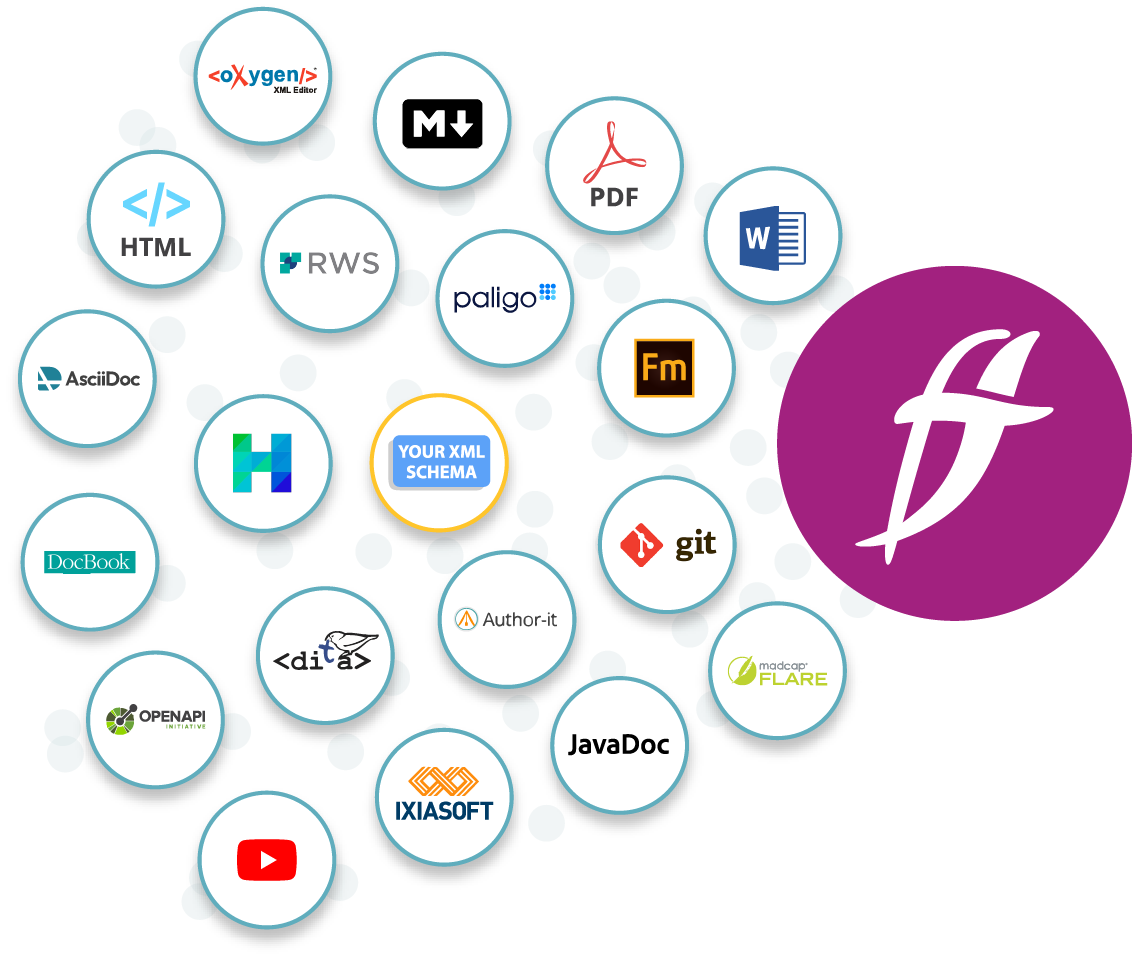
Do you currently have to reformat your content for each channel you publish to?
Your documentation contributes to creating a high-quality customer service and you’ve probably been misled into thinking that you needed to re-write your content to fit all your touchpoints.
Fluid Topics removes the burden of having to write your content in a specific format to fit the different channels. Our solution collects and unifies all types of documentation, no matter the initial source and format. From DITA, Docbook and other XML-based formats, to HTML, Markdown and YAML, our set of processing pipelines ingest your content in its native format. Our solution then transforms all your information into granular, unified, digital-ready content and publishes it simultaneously to all these channels. No lengthy formatting required.
Can you deliver personalized content to each user or group of users?
Companies have tried to deliver personalized content, usually manually, by creating different content for each customer type. In most cases, it just didn’t work. But if your content is available as granular, small components that are tagged with rich metadata then Content Delivery Platforms can assemble and deliver it in a personalized, contextual way.
Fluid Topics can deliver your documentation to each user according to their profiles, preferences, but also to their behavior from which our AI-powered search engine constantly learns from.
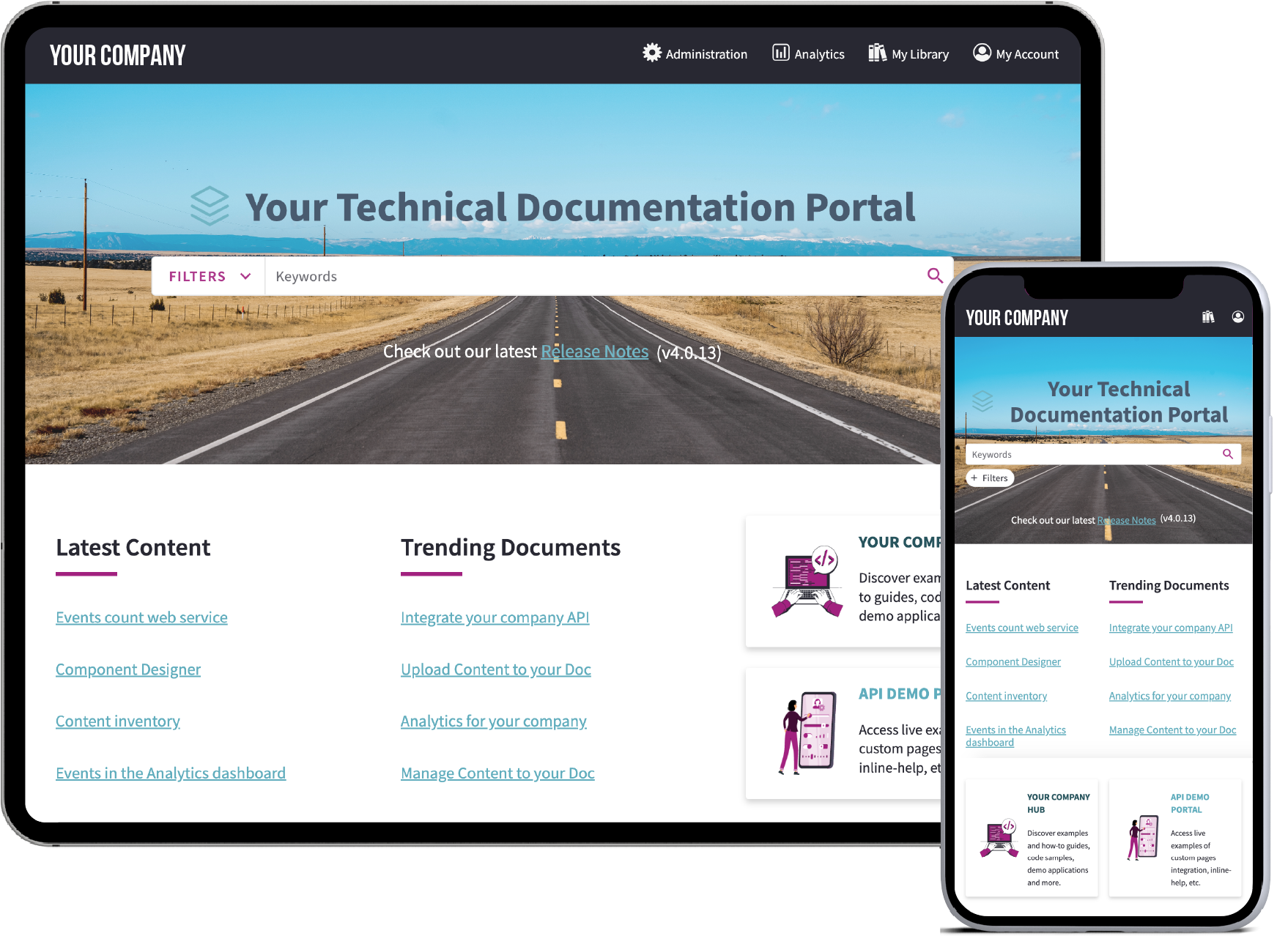
Is your content readable from any device whatever the format?
When dealing with technical products, 2D, 3D, videos, graphs, and diagrams are more relevant to users than text. Your content solution should be able to deliver and display all technical content no matter the format and no matter the screen your user has at hand.
Fluid Topics gives you an easy and smooth reading experience in any situation and on any device, and serves multimedia content such as images, audio, video, 2D or 3D vector graphics as easily as text. Our technology automatically adapts its interface and any content to the size of the device. Whether it’s a laptop, a tablet, a smartphone, or AR-VR goggles, the user experience is always optimized and truly native.
Is your documentation portal available in multiple languages?
Next-generation CDPs ensure full support for your global operations with the same speed, relevance, and cutting-edge Natural Language Processing capabilities for all your languages.
Fluid Topics supports multi-lingual content and provides user interfaces in the languages that you need.
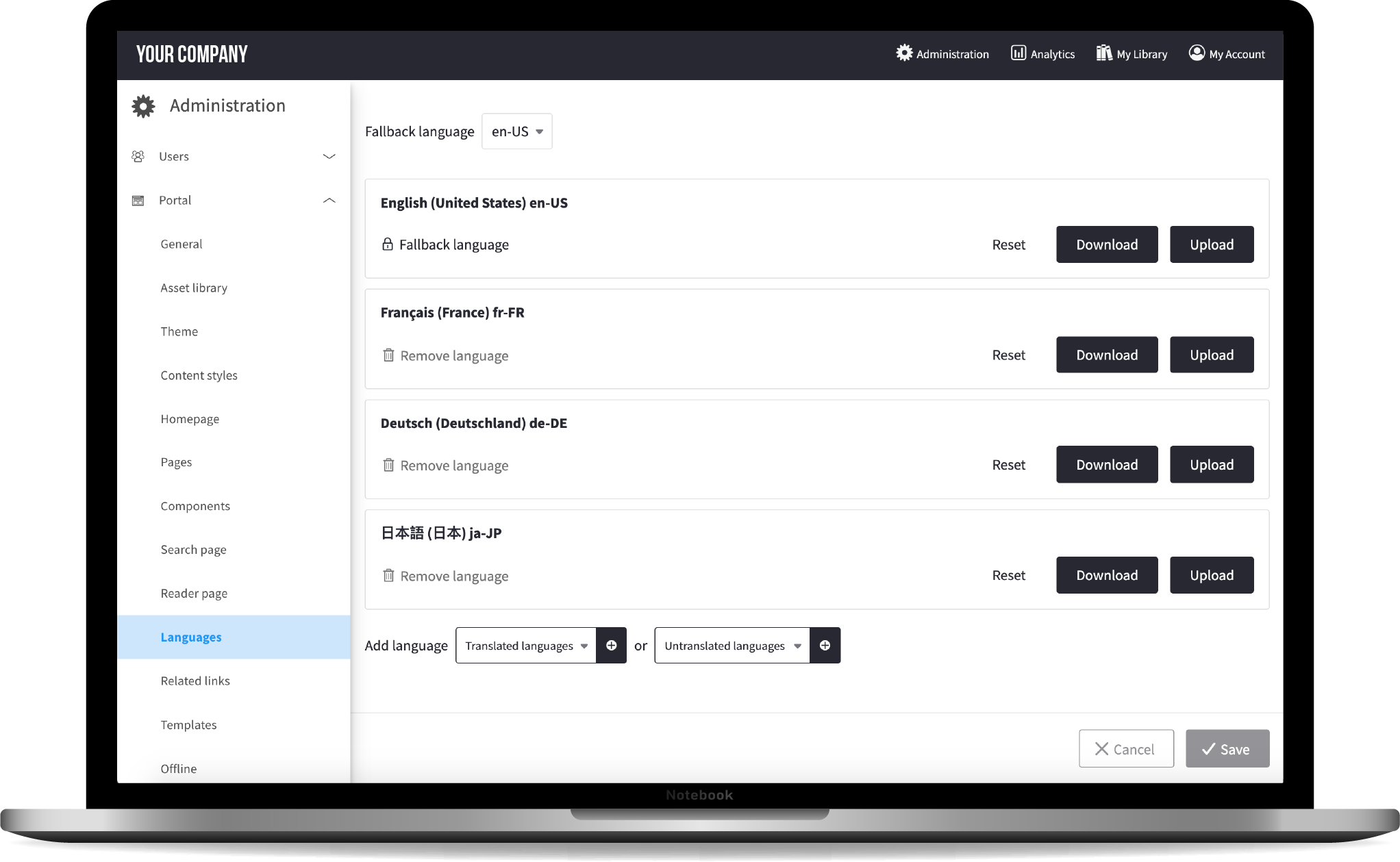
Can your users interact with your documentation (rate, add feedbacks…)?
Dynamic publishing is part of an ever more detailed conversation with your user that static documentation such as PDF documents is simply incapable of providing.
Fluid Topics engages your users with a host of features that allow customers to interact with your content, provide feedback, and collaboratively build a successful content experience for all. In this regard, users have the possibility to:
- Bookmark their favorite content
- Save searches and create content alerts
- Create and manage collections of documents
- Design their own personal books
- Rate the documentation and provide feedback
Watch this short video to learn more.
Can you measure your content’s performance with dedicated analytics??
Google Analytics and other web analytics tools are incredibly helpful for marketing content. However, they are not designed for technical documentation and cannot properly guide your content decisions.
At Fluid Topics, we capture every user interaction with high levels of detail and deep context. You’ll see what content was viewed down to the topic level, and for how long, every keyword search, selected facet, most popular searches and searches with no results, and much more. You can easily identify content gaps, evaluate the alignment of the documentation with the users’ needs and prioritize content work on assets.
We’ve got a full webinar dedicated to Content Analytics! Make sure to check it out.
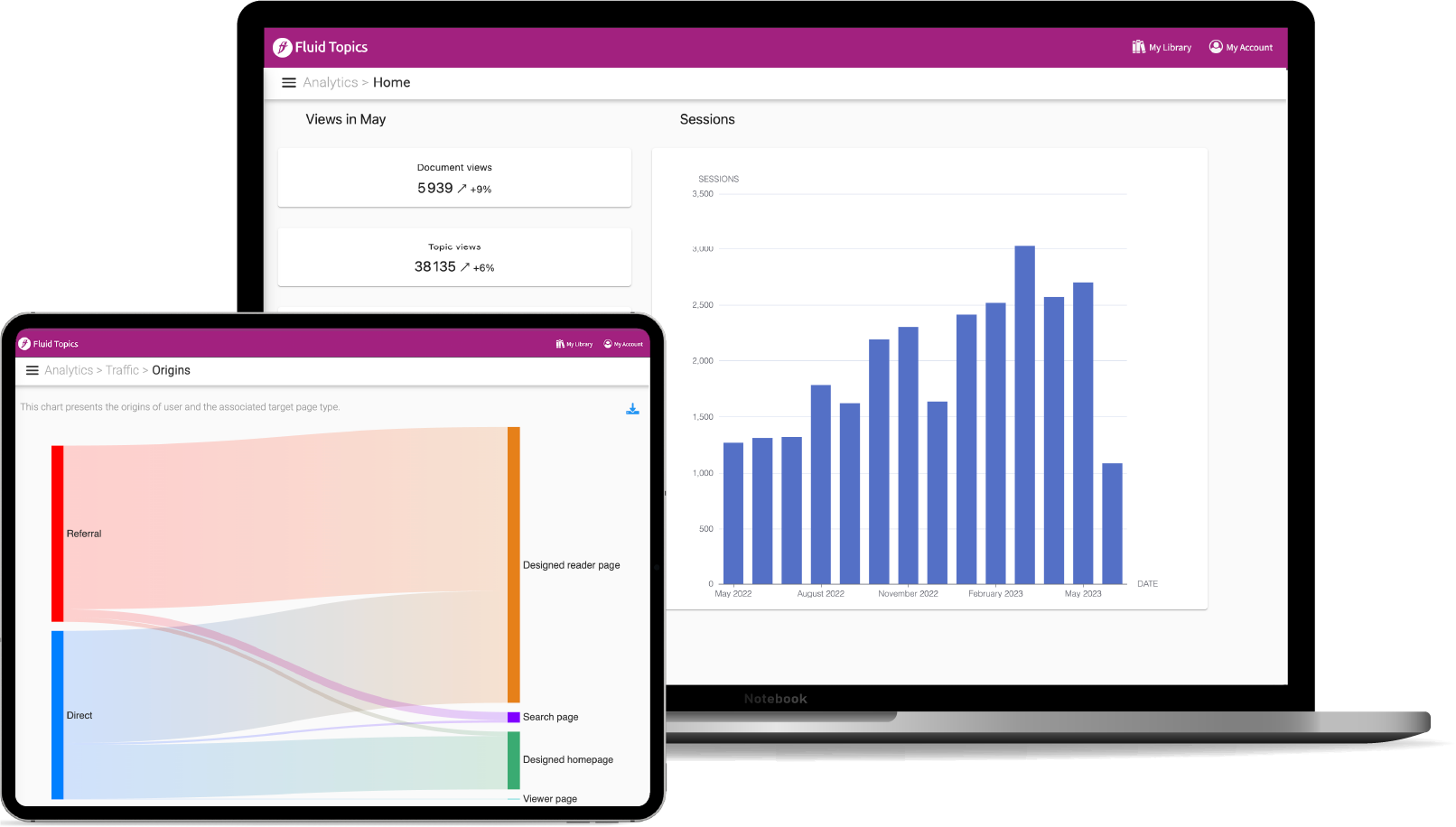
Can your customers easily find answers to their product or technical questions?
Your technical documentation might be world-class but if it can’t be found and accessed when needed then it might as well not exist.
The Fluid Topics search engine boosts the efficiency of your documentation portal with advanced search capabilities powered by AI that ensure that users get relevant answers to their questions fast. It offers smart autocomplete, spellchecking, search suggestions, application of business dictionaries, filters which dynamically refine searches, and more. Users are even able to find specific content contained within their repositories, all the way down to the document line-level. Cutting-edge, don’t you think?
Learn why our search engine is 25% more relevant than others.
How many of your support cases could have been answered with your existing documentation?
In today’s digital age, customers expect quick and efficient answers. They want their issues to be resolved as soon as possible without having to wait on hold or for a support agent to become available.
To reduce the number of support tickets coming your way, you’ve got a great option called „case deflection“. While self-service enables customers to find answers on their own by accessing relevant product content on-demand, case deflection involves guiding customers towards self-service – with recommendations for example – before they open a ticket or contact your support agents directly.
Learn more about the Fluid Topics case deflection module.
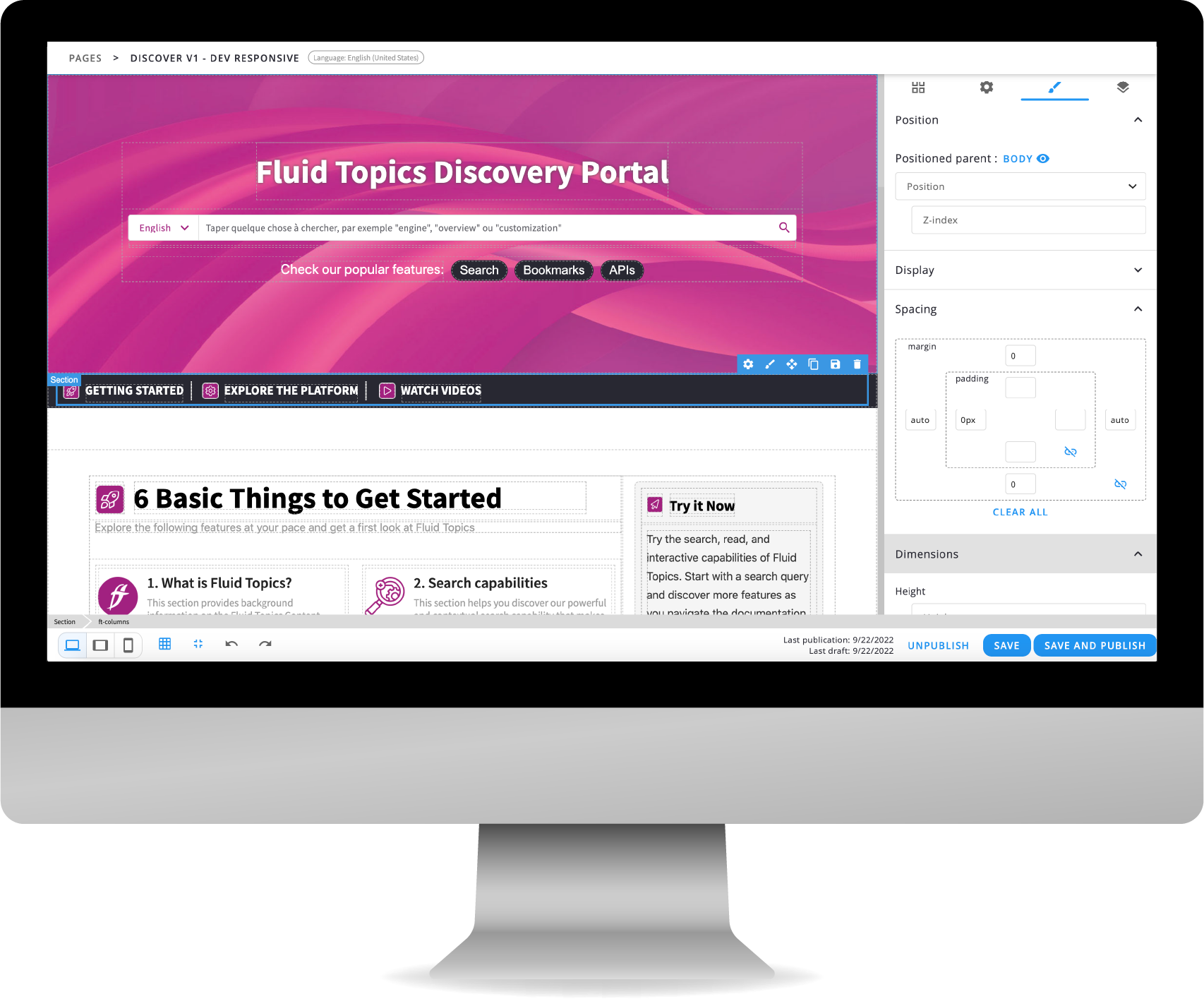
Can you customize your documentation portal without being vendor-dependent?
An out-of-the-box solution is great, but you need to be able to customize that solution to your company’s internal processes, branding, and user experience.
The Fluid Topics Page Designer enables you and your team to easily build and customize your documentation portal with a variety of “drag and drop” components through our WYSIWYG editor. You can create different home pages and landing pages, personalize layouts, branding and other design elements in full autonomy.
You have control over the settings you need to make customizations and won’t need to ‘open a ticket’ to get things done.
Are you already using AI technologies to support your content processes? (i.e. AI chatbots…)
Your company is likely looking at what could AI be used for in a number of business areas, technical documentation included.AI is at the core of Fluid Topics‘ search engine technology. Through our natural language processing, we help you find anything you’re looking for in just milliseconds.
From AI-aided customer support to smart recommendations, Fluid Topics harnesses the latest advancements in GenAI to improve your technical documentation and enhance your customer experience.
Our CEO, Fabrice Lacroix has recently published a great thought leadership on „How ChatGPT will Impact Technical Documentation„.
